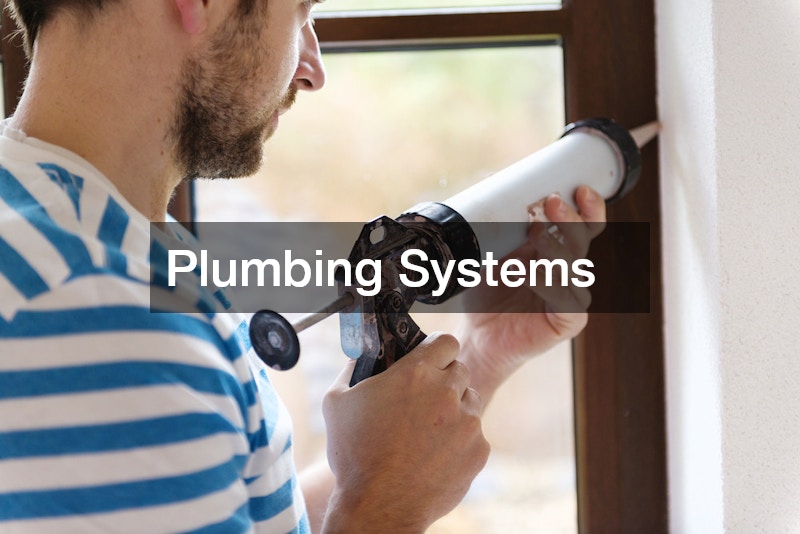Essential New House Build Checklist: What to Inspect Before Moving In
Introduction
Purchasing a newly built home is an exciting milestone, but it comes with the responsibility of conducting thorough inspections before moving in. Ensuring that every element of your home is in proper working order can save you time, money, and stress. According to the National Association of Home Builders (NAHB), nearly 70% of new homebuyers report issues they wish they had identified before moving in.
Conducting a final inspection is crucial because it helps you catch any construction defects, incomplete work, or safety hazards. This attention to detail guarantees that your new investment is secure and habitable. Additionally, it allows you to address any concerns with your builder or contractor while they are still responsible for the work.
A well-organized new house build checklist can guide you through this process. It will cover structural integrity, plumbing and electrical systems, HVAC efficiency, and safety features. This checklist ensures that no aspect of your home is overlooked, facilitating a smoother and more comfortable move-in experience.
1. General Inspection Guidelines
- Importance of Final Inspections: Explain why a final inspection is crucial to ensure everything in the house is properly working.
- Checklist Overview: Provide a high-level overview of the different areas to inspect.
Final inspections are indispensable when moving into a new home. They help verify that all components of your residence are functioning as intended. This preliminary step is vital for uncovering any construction issues or safety concerns affecting your living conditions.
The importance of a comprehensive new house build checklist cannot be overstated. The checklist acts as your guide, ensuring that you meticulously review every aspect of the property, from the foundation to the roof. This thorough evaluation minimizes the risk of encountering unexpected problems after you’ve moved in, which can be both costly and inconvenient.
Overall, the new house build checklist should cover several key areas: structural components, plumbing systems, electrical setups, HVAC units, and safety features. Each element plays a critical role in ensuring your home is safe and comfortable. Following an organized inspection plan can promptly and effectively address potential issues.
2. Structural Integrity

Exterior Inspection:- Walls and Foundation: Check for cracks or signs of damage. Look for proper sealing and drainage around the foundation.
- Roof and Gutters: Inspect for any missing or damaged shingles and ensure gutters are properly installed and clear of debris.
- Actionable Tip: Use a professional inspector to evaluate the roof and foundation. A recent American Society of Home Inspectors study found that 40% of new homes have minor structural issues.
Interior Inspection:- Walls and Ceilings: Look for cracks and stains, and ensure that paint and finishes are applied correctly.
- Floors: Check for any gaps, squeaks, or uneven surfaces. Ensure flooring materials are installed correctly.
- Actionable Tip: Walk through the house with a level to check for uneven floors.
When inspecting the exterior of your new home, pay close attention to the walls and foundation. Look for any noticeable cracks or signs of damage, as these can indicate underlying structural issues. Ensure the foundation is properly sealed to prevent water intrusion, and check that drainage systems are correctly installed to protect the foundation from water damage.
The roof and gutters are also essential components to evaluate. Check for missing or damaged shingles and ensure that gutters are firmly attached and debris-free. Hiring a professional inspector is advisable; a study by the American Society of Home Inspectors revealed that 40% of new homes have minor structural issues that might not be visible to the untrained eye.
For the interior, look closely at the walls and ceilings. Check for cracks and stains and apply paint and finishes uniformly. Examine the floors for gaps, squeaks, or uneven surfaces, which could indicate issues with the subfloor or installation. Walking through the house at a certain level can help you identify areas that need attention.
3. Plumbing Systems

- Fixtures and Faucets: Test all faucets and fixtures for leaks and proper water flow. Ensure that hot and cold water are correctly labeled.
- Pipes and Drains: Inspect under sinks and around toilets for leaks. Check that all drains are functioning correctly.
- Actionable Tip: Run water through all faucets and toilets for a few minutes to check for leaks or clogs. An Environmental Protection Agency (EPA) report highlights that improper plumbing installation can lead to water wastage and increased utility bills.
A crucial aspect of your new house build checklist is the plumbing system. Start by testing all the faucets and fixtures throughout the home to ensure they are leak-free and provide adequate water flow. Confirm that hot and cold water are correctly labeled to avoid surprises when using them.
Next, inspect the pipes and drains. Look under sinks and around toilets for any signs of water leakage. Ensure that all drains are functioning properly and that there are no blockages. This will help prevent any water damage or unpleasant issues down the line.
An actionable tip is to run water through all faucets and toilets for a few minutes to detect any leaks or clogs. According to a report by the Environmental Protection Agency (EPA), improper plumbing installation can lead to significant water wastage and increased utility bills. Ensuring your plumbing system is in top shape is both environmentally responsible and cost-effective.
4. Electrical Systems

- Outlets and Switches: Test all electrical outlets and light switches to ensure they function properly. Look for any exposed wiring.
- Circuit Breaker Panel: Check that the circuit breaker panel is properly labeled and that all breakers work. Ensure there are no signs of overheating or damage.
- Actionable Tip: Use a circuit tester to verify that outlets are properly grounded and functioning. The U.S. Consumer Product Safety Commission (CPSC) reports that faulty wiring is a leading cause of house fires.
Your new house build checklist should include a detailed electrical system inspection. Start by testing all electrical outlets and light switches throughout the home. This ensures they are functioning correctly and reveals any issues with wiring. Be on the lookout for any exposed wiring, which can pose a significant safety hazard.
The circuit breaker panel is another critical area to inspect. Verify that it is properly labeled and that all breakers work as they should. Look for any signs of overheating or damage, which could indicate potential electrical problems. Addressing these concerns early can prevent more significant issues in the future.
An actionable tip is to use a circuit tester to ensure outlets are correctly grounded and functioning. According to the U.S. Consumer Product Safety Commission (CPSC), faulty wiring is one of the leading causes of house fires. Thoroughly inspecting the electrical system can enhance the safety and reliability of your new home.
5. HVAC Systems
- Heating and Cooling Units: Test the HVAC system for proper operation and check that all vents are clear and functioning.
- Air Filters: Ensure that air filters are installed correctly and in good condition.
- Actionable Tip: Schedule a professional HVAC inspection to ensure all systems run efficiently. According to the Department of Energy, regular maintenance can improve HVAC efficiency by up to 20%.
The HVAC system is a critical component of your home’s comfort and functionality. Test the heating and cooling units to confirm they are operating correctly. This includes ensuring that the thermostat is functional and that the temperature settings reflect actual conditions.
Check all home vents to ensure they are clear and functioning. Blocked or malfunctioning vents can impede the HVAC system’s efficiency and effectiveness. Proper airflow is essential for maintaining a comfortable living environment and ensuring your system does not overwork itself.
An actionable tip is to schedule a professional inspection of your HVAC system. According to the Department of Energy, regular maintenance can improve HVAC efficiency by up to 20%. A professional inspection will uncover any issues that may not be immediately apparent and ensure your system runs at peak performance.
6. Safety Features
- Smoke and Carbon Monoxide Detectors: Ensure that detectors are installed in all required areas and functioning correctly.
- Fire Extinguishers: Check that fire extinguishers are easily accessible and up to date.
- Security Systems: Test any installed security systems or alarms to ensure they are operational.
- Actionable Tip: Replace the batteries in smoke and carbon monoxide detectors annually.
Safety features are a non-negotiable aspect of your new house build checklist. Start by installing smoke and carbon monoxide detectors in all required locations. Test each device to confirm that it is functioning correctly and can provide early warnings in an emergency.
Fire extinguishers are another vital safety component. Check that they are easily accessible and that their expiration dates are current. Having functional fire extinguishers readily available can be the difference between a minor incident and a major disaster. Additionally, make sure you know how to use them properly.
If your home includes a security system, take the time to test it thoroughly. Ensure that all alarms, sensors, and cameras are operational. An actionable tip is to replace the batteries in smoke and carbon monoxide detectors annually. Regular maintenance of these safety features ensures they will perform as expected when needed.
7. Final Touches and Cosmetic Details
Your new home’s final touches and cosmetic details are as important as its functional components. Begin by checking all the doors and windows to ensure they open, close, and lock properly. Look for any drafts or gaps that compromise your home’s energy efficiency and comfort.
Inspect the paint and trim throughout the house for any imperfections or damage. Properly applied paint and trim add to your home’s aesthetic appeal and serve as a protective barrier against the elements. Addressing any issues now can save you time and money on repairs later.
An actionable tip is using a draft detector to identify gaps around windows and doors. Proper sealing of these areas can significantly improve your home’s energy efficiency and overall comfort. Ensuring these final touches are in place contributes to a more pleasant and stress-free living environment.
8. Kitchen and Furniture Checklists
New House Kitchen Checklist:
Ensure the kitchen is fully equipped and functional before moving in.
Actionable Tip: Inspect all kitchen appliances to ensure they are installed correctly and functioning. Verify that kitchen storage is organized.
New House Furniture Checklist.
Highlight the need to select and arrange furniture to ensure a smooth transition into the new home.
Actionable Tip: Plan and measure furniture placement in advance to avoid any last-minute issues. Consider hiring a moving company for a more efficient setup.
Ensuring your kitchen is fully equipped and functional before moving in is essential for a smooth transition. A comprehensive kitchen checklist can help you identify all the must-have items and setup tips. Review and inspect all kitchen appliances to confirm they are installed correctly and functioning as expected. Also, ensure that kitchen storage is organized to maximize space and efficiency.
Similarly, having a detailed furniture checklist is crucial in the moving process. This checklist will aid in selecting and arranging furniture to ensure that each piece fits perfectly in your new home. Plan and measure furniture placement in advance to avoid any last-minute issues, and consider hiring a moving company to facilitate an efficient and stress-free move.
Use actionable tips from these checklists to streamline your moving process. Inspect and organize your kitchen thoroughly, and take the time to plan your furniture layout thoughtfully. These steps will contribute to a more organized and enjoyable move-in experience, allowing you to settle into your new home easily.
Conclusion
In conclusion, thoroughly inspecting your new home is critical in ensuring a smooth transition. Addressing any issues before moving in can save you time, money, and stress in the long run. Using a comprehensive new house build checklist will help you cover all essential areas, from structural integrity to safety features.
This detailed guide can make you confident that your new home is ready for occupancy. The actionable tips provided throughout the article will further assist you in identifying and addressing potential issues. These steps guarantee that your new house meets your expectations and provides a comfortable living environment.
We encourage all new homeowners to utilize the checklists and tips to facilitate a seamless move-in process. A well-inspected home is a more enjoyable and less stressful place to live. Don’t overlook this crucial part of your home-buying journey; ensure your new residence is in perfect condition from day one.

